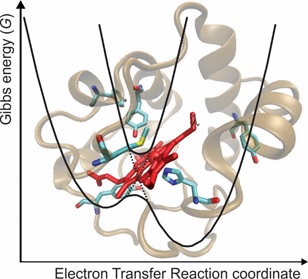Modulation of Functional Features in Electron Transferring Metalloproteins
REVIEW
Abstract
Electron transferring metalloproteins are typically implicated in shuttling electrons between energy transduction chains membrane complexes, such as in (aerobic and anaerobic) respiration and photosynthesis, among other functions. The thermodynamic and kinetic electron transfer parameters of the different metalloproteins need to be adjusted in each case to the specific demands, which can be quite diverse among organisms. Notably, biology utilizes very few metals, essentially iron and copper, to cover this broad range of redox needs imposed by biodiversity. Here, I will describe some crucial structural and dynamical characteristics that modulate the electron transfer parameters (and alternative functions) of two prototypical metalloproteins: the iron protein cytochrome c and its redox partner, the CuA center of the terminal respiratory enzyme cytochrome c oxidase. Specifically, I will focus on summarizing results obtained in recent years in my laboratory.


